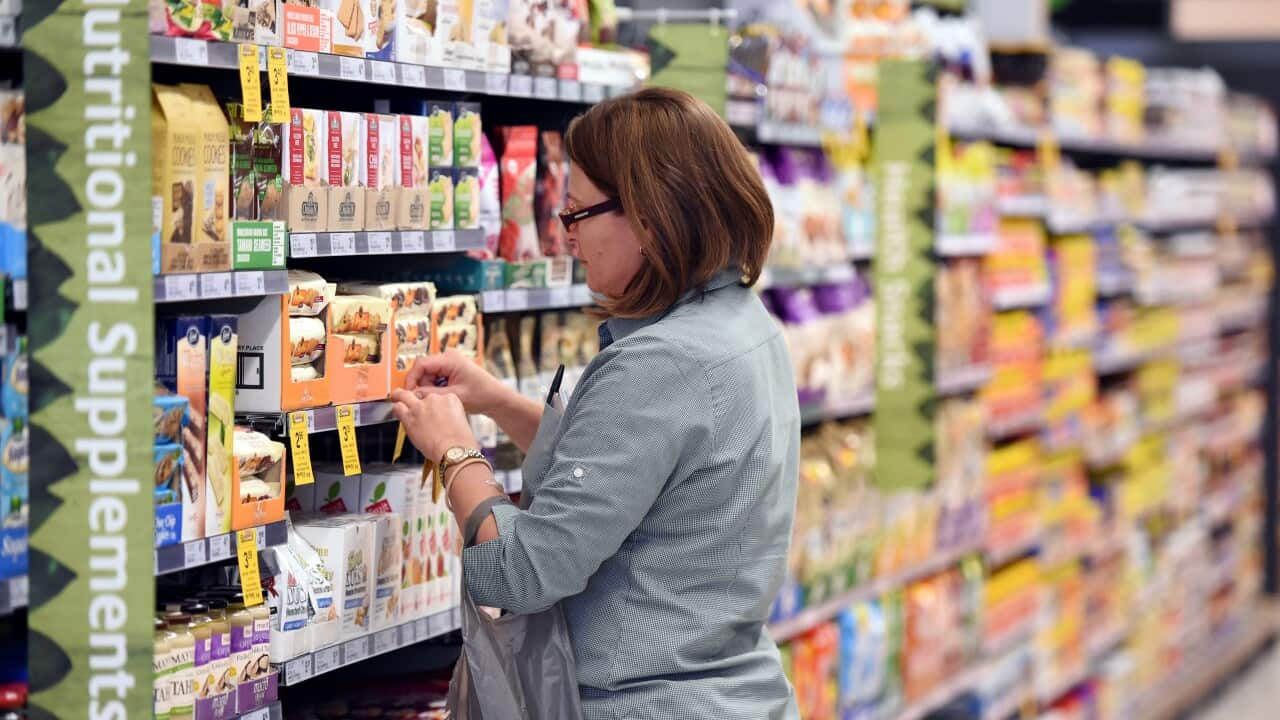Key Points
- Warehouse-style Asian supermarkets can offer prices up to 30 per cent lower than traditional stores.
- An expert says this trend could challenge major chains like Coles and Woolworths.
- The rapid expansion operates in a largely unregulated space, raising concerns about food safety and compliance.
Bulk discounts on beverages and bundled snack promotions have made warehouse-style Asian supermarkets a growing trend across Australian cities.
Unlike traditional Asian grocers typically found on main streets, these shops are often tucked away in industrial estates.
Upon stepping through the warehouse roller doors, customers are greeted with a variety of goods often displayed in their original cartons rather than on organised shelves.

The new breed of warehouse-style supermarkets specialise in bulk purchase options. Credit: Fujia Yang
Some customers say they prefer these stores for their lower prices.
“The prices are lower, and as long as you can drive, it’s easy to come and shop,” one shopper explained.
"Things here are more affordable. I just wish there were more product variety,” another said.

A shopper says he often brings his son to the warehouse supermarket and hopes for more variety. Credit: Fujia Yang
Over time, some customers began collecting their orders directly from his Melbourne warehouse. In June 2023, he decided to officially open his warehouse to the public.
It's similar to a Costco-style discount warehouse.Mark Zhang, Melbourne warehouse supermarket owner
Zhang obtained a new business licence, added a few shelves, and officially launched his brick-and-mortar operation.
His store combines wholesale and retail sales, with beverages as a primary offering.
“We mainly sell beverages by the carton,” he said.
“Dumplings are priced at $11.99 for three packs. Elsewhere, one pack would cost about $8. Most of our products are 20 to 30 per cent cheaper than traditional Asian supermarkets.” Zhang added.

Mark Zhang describes his warehouse supermarket as an 'Asian food Costco', offering bulk and retail sales. Credit: Fujia Yang
“Traditional Asian supermarkets might order five to 10 boxes, but we negotiate prices by ordering an entire pallet,” Chen explained.
Customers appreciate the affordability and bulk purchase options.
One shopper, from the Victorian suburb of Oakleigh, said: “For a small family like ours, buying in bulk helps a lot because things go quickly, especially with two young children.”
Some consumers admitted that buying in bulk occasionally led to over-purchasing.
“When items are bundled, I ask friends or family if they want to share. We buy a lot at once, so we don’t need to visit often,” another shopper said.
A challenge to the major chains?
Dr Ou Yang, a senior research fellow at the Melbourne Institute of Applied Economic and Social Research, believes this trend could challenge traditional Asian supermarkets and major grocery chains.
Warehouse-style Asian supermarkets may impact Woolworths and Coles in Chinese neighbourhoods.Dr Ou Yang, senior research fellow, Melbourne Institute of Applied Economic and Social Research
Choice data shows grocery prices have risen at Woolworths. An average basket of 14 common items including apples, carrots, Weet-Bix, bread, pasta, milk and beef mince cost $68.37 in the June quarter, $3.44 more expensive than the same items three months before.
“For consumers, this is a complementary shopping model. From a business perspective, markets are always competitive, and new models inevitably replace older ones,” Yang observed.
“The Chinese community has always embraced the ‘wet market’ concept.”
In addition to fresh food, there is also the emergence of warehouse Asian supermarkets for daily essentials.
"We will never return to the pre-pandemic economic environment of low or zero interest rates. High inflation and high interest rates will define the major economic environment moving forward. Warehouse-style Asian supermarkets will become increasingly refined," he added.
'More of a hometown flavour'
With similar stores rapidly emerging, some operators are shifting toward specialisation. Bill Chen’s warehouse specialises in Taiwanese products.
“Most Taiwanese food (items) can be found here, making us a one-stop shop. We currently stock over 1,500 categories. (It's) More of a hometown flavour,” Chen said.
Targeting car-owning Chinese families, this style of Asian supermarket aims to cater to larger household consumption needs.
“Their demand is more stable, and customer loyalty tends to be higher,” Zhang said.
To attract more foot traffic, Zhang moved his store from a remote industrial area closer to residential neighbourhoods, where weekend peak traffic now reaches 500 to 800 customers per day.

Bill Chen, a Taiwanese food warehouse supermarket owner, believes competitiveness goes beyond a warehouse model. Credit: Fujia Yang
Looking ahead, he believes maintaining competitiveness requires more than just a warehouse-style model.
“It’s about creating a brand image. When people think about buying something, they should think of you. Whether it’s a warehouse or not isn’t the decisive factor,” he said.
While the market grows rapidly, Yang cautioned that regulatory measures such as food safety and expiry date management might lag.
“Warehouse-style Asian supermarkets are still in a wild and unregulated phase of development,” he said.
“Regulation tends to follow market development. Regulation will only catch up once these stores reach a certain scale.”











